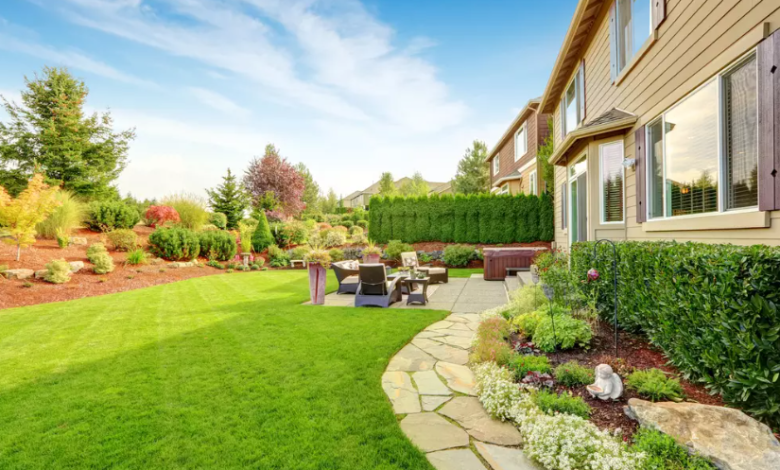Build Healthy Lawns With Quality Landscaping Materials

Creating a lush, vibrant lawn that becomes the envy of your neighborhood requires more than just regular watering and occasional mowing. The foundation of any thriving lawn lies in the quality of materials you choose during installation and ongoing maintenance. From soil amendments to seed selection, every component plays a crucial role in determining whether your grass will flourish or struggle to survive.
Many homeowners focus solely on surface-level care—fertilizing, watering, and cutting grass—without addressing the underlying factors that promote long-term lawn health. However, professional landscapers understand that success begins beneath the surface, with proper soil preparation and the right combination of materials working together to create an environment where grass can thrive naturally.
The Foundation: Quality Soil Makes All the Difference
Your lawn’s health depends heavily on the soil beneath it. Poor soil conditions can sabotage even the most expensive grass seed and dedicated maintenance routines. Compacted, nutrient-poor, or improperly balanced soil creates an uphill battle for grass roots trying to establish themselves and access essential nutrients.
Testing your soil’s pH levels, nutrient content, and drainage capabilities provides valuable insights into what amendments might be necessary. Most grasses prefer slightly acidic to neutral soil, with pH levels between 6.0 and 7.0. If your existing soil falls outside this range, incorporating quality amendments can help rebalance the growing environment.
When selecting soil improvements, premium top soil in West Valley City offers homeowners access to properly screened, nutrient-rich materials that can transform struggling lawns into thriving landscapes. High-quality topsoil provides the organic matter, drainage, and nutrient base that grass roots need to develop strong, extensive root systems.
Essential Materials for Lawn Success
Organic Compost and Amendments
Organic compost serves as nature’s multivitamin for lawns, slowly releasing nutrients while improving soil structure and water retention. Quality compost helps clay soils drain better while helping sandy soils retain moisture and nutrients more effectively. Look for well-aged compost that has been properly processed to eliminate harmful pathogens and weed seeds.
Appropriate Seed Varieties
Choosing grass seed suited to your local climate, soil conditions, and intended use prevents future problems and reduces maintenance requirements. Cool-season grasses like tall fescue and perennial ryegrass work well in many areas, while warm-season varieties thrive in different climates. Consider factors like foot traffic, shade tolerance, and water requirements when making your selection.
Mulch and Protective Coverings
Straw mulch or erosion control blankets protect newly seeded areas from wind, water damage, and bird predation while seeds germinate. These materials help maintain consistent soil moisture and temperature, creating ideal conditions for seed establishment.
Installation Best Practices
Proper installation techniques ensure your quality materials deliver maximum benefits. Begin by removing existing weeds, rocks, and debris from the planting area. Till the soil to a depth of 6-8 inches, incorporating soil amendments evenly throughout the planting bed.
Grade the area to promote proper drainage while eliminating low spots where water might collect and cause problems. A slight slope away from buildings prevents water damage while ensuring adequate surface drainage during heavy rainfall.
After spreading and leveling your improved soil mixture, lightly compact the surface to eliminate air pockets while maintaining good soil structure. Avoid over-compaction, which can restrict root growth and water infiltration.
See also: Small Home, Big Style: Space-Saving Design Trends
Maintenance Materials That Support Long-Term Health
Seasonal Fertilizers
Quality fertilizers provide essential nutrients throughout the growing season, but timing and formulation matter significantly. Slow-release fertilizers offer steady nutrition over extended periods, reducing the risk of burning grass while maintaining consistent growth rates.
Aeration Tools and Materials
Core aeration relieves soil compaction while improving air and water movement through the root zone. Sand or compost topdressing after aeration helps maintain improved soil structure and adds organic matter to support beneficial microorganisms.
Disease and Pest Management
Preventive treatments and organic pest control materials help maintain lawn health without compromising environmental safety. Beneficial nematodes, organic fungicides, and natural pest deterrents provide effective protection while supporting ecosystem balance.
Timing Your Material Applications
Spring applications focus on root development and early-season nutrition, while fall treatments prepare grass for winter stress and promote root growth during cooler temperatures. Summer materials should emphasize drought tolerance and stress resistance rather than rapid growth that requires excessive water.
Understanding your local growing season helps optimize material timing for maximum effectiveness. Applying the right materials at the wrong time can waste resources and potentially harm grass health.
Transform Your Landscape Investment
Quality landscaping materials represent an investment in your property’s long-term value and curb appeal. While premium materials may cost more initially, they typically deliver superior results with less ongoing maintenance, creating savings over time.
Professional-grade materials often provide better coverage rates, longer-lasting effects, and more predictable results compared to budget alternatives. This reliability helps ensure your time and effort produce the healthy, attractive lawn you envision.
Creating Your Action Plan
Start by assessing your current lawn conditions and identifying specific problem areas that need attention. Soil testing reveals underlying issues while helping you select appropriate amendments and treatments.
Develop a timeline for material applications based on your local growing season and grass type requirements. Consider working with local suppliers who understand regional soil conditions and can recommend materials specifically suited to your area’s unique challenges.
Regular maintenance using quality materials keeps your lawn healthy while preventing minor issues from becoming major problems. Consistent care with the right products creates the foundation for a beautiful lawn that enhances your outdoor living space for years to come.




